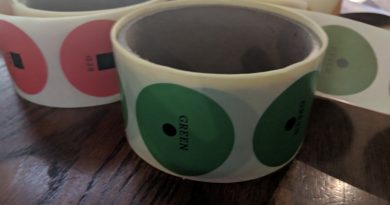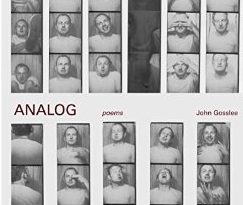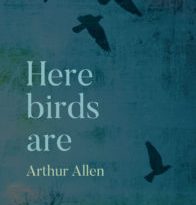Teaching A Bird To Sing by Tracey Rhys
– Reviewed by Deirdre Hines –
The questions implied by Teaching A Bird To Sing are metaphoric. In all good metaphors we are called to participate in an imagining that involves acts of recognition that draw on memory to authenticate that memory. In this case, we draw on all our emotional, physical and intellectual memories of the mother-son relationship. Something is different here, though, hinted at in the first line of the opening poem ‘On The Moon, Which is Spiralling away from Us at 3.8 cms a Year’:
One day the unthinkable will happen. The moon will leave us.
Attributing a masculine pronoun to what has, since Graves, been written as female is both deliberate and apt. Rhys concludes the poem by imagining the moon’s future, either “in the company of others”, or “as lost and silent/as space itself'”. The moon and the son of this collection have a lot in common. Poem after poem in this pamphlet builds on the poet’s and our knowledge of a child as differently beautiful as the dinosaurs and insects he is fascinated by. The surprise of the enjambed line in ‘The Good Baby’ hints at his book-obsessive difference:
..forever after turning over and back the same leaf
until the colours fade…
Light is shed on the child’s symptoms in the leaflet that accompanies a letter from CAMHS. One of the best lines in the collection reads “I undressed the acronym.” In her undressing we learn that the red acronym stands for ‘Child and Adolescent Mental Health Services’ . In one of the few satiric asides in the collection, Rhys observes: “as if a mind can only differ if disturbed”. The accompanying leaflet flags the symptoms (speech delays/ behavioural repetitions, the boomerang of echolalia) that we have come to associate with autism. We empathize with her reaction in a visceral way.
I blushed despite myself…
Rhys draws us brilliantly into her emotional landscape, seeing “the small moons where his fingers/ pressed pips” on the arm of a chair, six years ago, when he was “outing/ my walnut boat bellybutton”. The sea is an important motif in the lives of both mother and son. The bird of the title poem is her son, the ‘fledgling poised for flight’, on the garden swing . The verbs she chooses in this first verse are all synonymous with the avian world: “head tilted/sat atop….then he’s gone…gliding”, with black alert beady eyes. In the second stanza we learn how difficult communication is between mother and son, and we learn of her strategies to chart the seas that lie between them:
I chanted, This is a smile.
I told him, This is how your mother shows she’s glad.
Like coaxing a bird to sing.
The first line of the third verse is pure metaphor; “There were silences that drowned the nest”. All the things they could and should have done but that cannot be done until he can learn to fly. His cry as he flew upwards on the swing is “sea air and gulls’ scream”. There is a different approach to the sensory here, and Rhys handles it masterfully.
About a third to a half of individuals with autism do not develop enough speech to meet their daily communication needs: silence is often a huge presence in the life of an autistic child. Echolalia is defined as the unsolicited repetition of voaclizations made by another person. In the poem of the same name, Rhys startles the uninformed reader by allowing us to participate in the morning rituals of breakfast. Few poets could handle this as well as Rhys does.
I offer breakfast and the knife replies
scratching as it butters toast,
the door complains to me again.
The kettle hushes.
The poignancy of her son’s trike calling her name as it “toots me/ from its corner in the hall” has caused me to look at the world with a heightened awareness. This is in many ways a parallel universe, one where children live with unusual fears and parents struggle to discover the best ways not only of communicating but of alleviating fears. In ‘The Lights Have Eyes’, the word ‘illuminations’ makes its second appearance in this collection. This time it is not in refernce to the discussions that will take place after the moon’s departure, but in the context of her growing recognition of what fear looks like for her son. Bright lights, the fluorescene of the TV and the PC and his reaction to those fears:
Your voice squeals
like brakes in a tunnel, on rails that snake and never stop.
A commonly believed and repeated myth is that people with autism lack imagination. Rhys questions and pushes this myth toward extinction in poems such as ‘The Panel Have Met to Share Their Findings’ and ‘Can I Talk to You about Dinosaurs?’. Her musings on her pupil’s categorisation of insects ‘ by their quantity of parts’ finds its counterpart in the panel’s dismissal of her interpretation if her son’s play, dismissing it with their own spin on what exactly they believe lack of imagination means:
perhaps he mimics
scenes from books.
In contrast to their impaired imaginations, her son is ‘riding jeep safaris on the dining chairs’ at home. He likes to talk about dinosaurs and can spot an error in the Usborne guide. Rhys is careful not to name her son or herself, endowing both of them with an ‘everymother’ and ‘everyson’ quality that universalises their relationship for ‘everyreader’. She also maintains the bird metaphor throughout. My favourite use of this has to be “You are a clockwork bird”, in ‘Secrets I’ll Tell When He Asks’. There are many illuminations in this pamphlet, not least the luminescence Green Bottle Press have lit by publishing this poignant poet.





